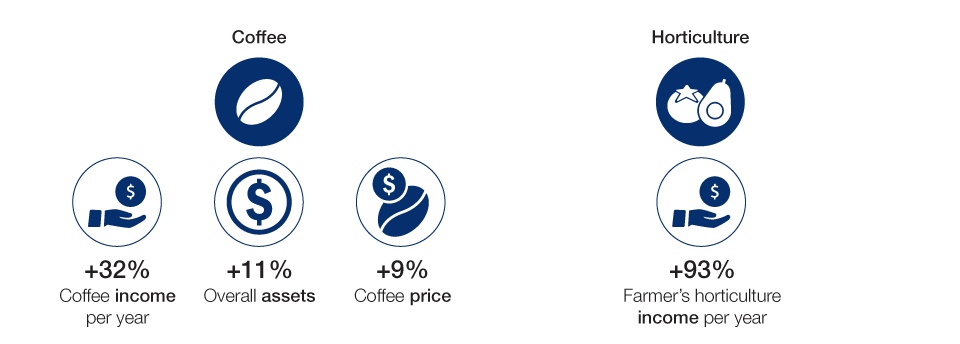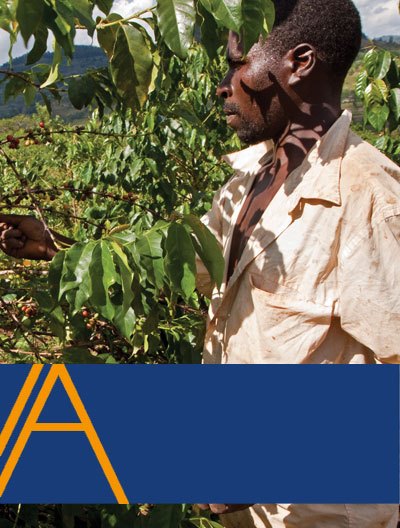Impact assessment: Project for Rural Income through Exports in Rwanda
Impact assessment: Project for Rural Income through Exports in Rwanda
The Project for Rural Income through Exports in Rwanda, known by its acronym PRICE, aims to increase returns to farmers through the development of export-driven value chains for coffee, tea, sericulture and horticulture. The project is assisting almost 128,700 rural households to access financial services and markets, and to increase the production and quality of their cash crops.
Between May 2017 and July 2018, IFAD conducted an impact assessment of PRICE. It focused on the project's support to coffee cooperatives to increase their profitability, and its efforts to give horticulture farmers access to financial services, as a means to expand production and business activities, and ultimately their financial returns.
Key impact estimates
An impact estimate is calculated as the difference in mean outcomes between the treatment group (project participants) and the comparison group (non-participants). PRICE has achieved significant results in transforming livelihoods among rural farmers, notably:

Main lessons
Based on both quantitative and qualitative results, a number of important lessons were drawn from the impact assessment that can inform design of future projects and country strategies, as well as policy formulation.
Coffee-cooperatives
- The evidence showed that "learning by doing" can lead to greater impact on targeted groups. In particular, real-time integration of administrative and technical lessons during the implementation of PRICE's support to coffee cooperatives led to considerably higher impact on poverty and incomes among coffee farmers.
- Interventions designed to enhance quality and quantity of coffee production often come with higher input and marketing costs, such as hired labour, which affect increases in farmers' incomes. For instance, while coffee sales doubled among targeted farmers, the assessment recorded only a 32 per cent increase in income due to higher inputs costs. Future project designs should incorporate ways of minimizing cost increases.
- Consistent follow-up and longer duration of engagement with cooperatives is crucial to ensuring sustained improvement in the livelihoods of their member farmers.
Horticulture-finance
- Supporting farmers to develop business plans and providing endorsement letters played a key role in motivating them to implement their business idea, even by using their own personal savings and external loans. This contributes to development impact even if the farmers did not receive capital from the project.
- When designing a grant facility tied to a loan, one should acknowledge that it is more adapted to relatively wealthier farmers. It is therefore necessary to design separate financing instruments for farmers with little or no collateral. Additionally, selection criteria should be differentiated for better-off and poorer farmers in order to guarantee equitable access to grants.
- Future designs should include mechanisms to ensure that capital received through the project is fully invested in the planned business enterprises. The evidence showed that larger-scale farmers also invested in enterprises not included in their business proposals, such as local shops, processing facilities, and local transport businesses. This, however, created job opportunities for residents of the project area.
